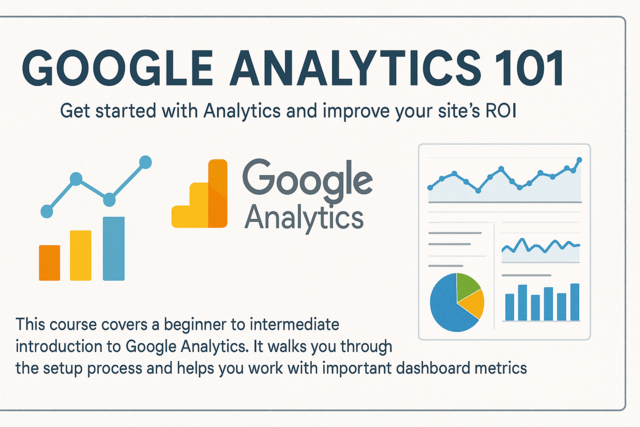If you're still calling the things that are on your desktop, such as MS Office, programs, it's time to redo that way of thinking. In Windows 8, you have apps on your Start screen. These apps are simple for the most part. Then, you have apps that open in your desktop. These are the more traditional apps - or what some of us used to call programs - and include MS Office, Photoshop, etc. These applications can be pinned to the Start screen for easy access, but they will always open in the desktop. Desktop applications offer full features such as toolbars and menus. Again, Start screen apps are much simpler.
Let's learn how to open a desktop app. If you're on your desktop, you can open a desktop application the same way you always have: by double clicking the icon that represents the application. However, if you're on the Start screen, it's just a little different.
Of course, you can always pin an app to the Start screen. However, if you want to find a desktop application that hasn't been pinned, here's how you do it.
First, go to the Start screen. If you're on the desktop, simply hit the Windows key on your keyboard. It's a quick way to toggle between the desktop and Start screen.
Next, start typing "WordPad."
Now you can click to open the application. It will open in the desktop.
Let's stay with WordPad for a little bit in this article. It's important to know how to use menus and toolbars in desktop apps, as well as how to enter and format text. If you already know these things, this will be a review. However, since Windows 8 is such a departure from previous versions of the operating system, it's nice to have confirmation that these basic things are still done the same way.
Menus contain lists of commands. Menus can appear as dropdown menus, or they can appear in ribbons - as you'll soon see with File Explorer. When you click a menu item - or a command - there are a few possible outcomes. You might see a dialogue box that offers more options, a request for confirmation, or settings - or the command may simply tell the application to take a certain action, such as saving a file.
Let's use WordPad as our example and look at the menus.
Go ahead and open WordPad.
You'll see three tabs - or three menus. They are File, Home, and View. Each of these tabs - or menus - contains commands.
Click on the File tab.
The File tab contains commands that let you open a document, create a new document, save a document, and even print a document.
If a command has an arrow to the right of it, you can mouse over that arrow to see subcommands.
Below are the subcommands for the Save As command:
The other two menus in WordPad are Home and View.
The Home menu contains formatting commands while the View menu contains commands for viewing the document.
In WordPad as with Microsoft Office, your tools and commands are located in the ribbon. Some desktop applications, such as photo editing software, have tools and commands located in toolbars. Both the ribbon and toolbars give you the ability to open, save, print, and modify documents.
There are many apps, such as messaging, email, and WordPad that will require you to enter text. You can also format the text with different colors, sizes, and other effects after you enter it. Let's review how to do this in Windows 8.
Open WordPad again.
Click in the document area to see the cursor, then enter a sentence of text, as shown below.
Now select the text. Do this by clicking to the left or right of the text, then dragging your mouse over the text to select it:
Next, click the Home tab. You format the text using bold, italics, or underline. You can change the alignment of the text, the font size, the font type, the font color, etc.
The Home tab is pictured below.
To boldface the font, click the Bold button . To change the font color, press this button: . Let's change our text to bold with a red font.
Practice entering and formatting text. You can mouse over any button to learn what it does:
If you want to cut out a section of text and move it to a different place in the document - or if you want to copy a section of text and place it in a different document, you use the Windows Clipboard. You can cut or copy something to the Windows Clipboard, then paste it somewhere else in the document - or into another document. For example, you can cut a paragraph from a WordPad document and paste it into an email.
Let's learn how it works.
Select the text you entered in WordPad. Right click, then select Cut or Copy. Cut will remove it from the document. Copy will create a copy, but not remove the selected text.
Now, open a new WordPad document by going to the File tab, then clicking New.
Click in the document area of the new WordPad document to see the cursor.
Now, right click and select Paste.
You can print files from a lot of applications. You can print emails, documents, spreadsheets, etc. All you need is a printer connected to your computer to start printing.
To print in WordPad, go to the File menu. Most desktop applications have a File menu that you use to print.
Next, click Print.
Above is the standard print dialogue box that you'll see before you print anything from your computer, even a web page.
Select the printer that you want to use for the print job.
Select the pages that you want to print and how many copies of each page.
Click the Print button when you're ready to start printing.
There are typically two commands you can choose from when saving a file: Save and Save As. The Save command will save the file with its current name and its current file format. For example, if you use the Save command to save a document named "One" that's in rich text format, it will save the document as "One" in rich text format. However, if you choose Save As, you can rename the document and save it as a different format, such as plain text.
To save in WordPad, go to the File menu and click either Save or Save As.
Select the format you want to save it in.
Enter a name for the document:
Note: If the document hadn't been previously saved (a new document that you haven't saved yet), the Save As command will take you straight to the dialogue box pictured above. Select the format from the Save As Type field.
So far in this article, we've focused on desktop apps. Now, let's talk about Start screen apps. In particular, let's talk about games.
If you look at the Start screen, you'll see a tile for games.
If you click on this tile, it takes you straight to Xbox games. This gives you games that are in the spotlight, as well as access to the Xbox store and the Windows Game Store.
Scroll to the left to set up your account and avatar:
Click Create Avatar.
Next, select an avatar to use.
You can click to adjust the shape of your avatar.
When you're finished customizing your avatar, click Save.
Now, click Edit Profile.
Enter your name, motto, location, and bio. Remember that people you don't know will see this information, so don't be too exact with personal information such as full names and exact locations.
To update Start screen apps, go to the Windows Store tile:
Note: You must be signed into your account to play games, install updates, and download apps.
Your updates will appear in the upper right hand corner of the store screen. Click the green Update.
Uncheck any updates you don't want to install.
You can view details about the app you're updating by clicking View Details at the bottom of the screen, or click Install to install the update.
To close a desktop application, click the X in the upper right hand corner of the screen: .
To close a Start screen app, you can do two things:
Click the top of the screen and drag downward.
Go to the upper left hand corner of the screen, then drag your mouse down to see all open apps. Right click on the app you want to close. Click Close.
To uninstall a desktop application, go to the Control Panel and select Programs and Features. Select the program you want to uninstall, then click Uninstall.
To uninstall an app from the Start screen:
1. Right click on the app, then click Uninstall.
2. Click Uninstall again.
You don't have to click the Windows Store tile every time you want to search for apps to buy or download for free. Simply go to the Start screen and start typing an app name. You can even type the type of app you want. For example: texting.
The search box will appear:
Scroll down on the right hand side (below the search box) and select Store.
Windows 8 will then display all apps related to "texting" in the store.
You can now sort your results by categories, price, and relevance.
If you click any one of these apps, it will take you to the Windows Store. Of course, if you prefer, you can click the Store tile and go straight there to search.
When you find an app in the store that you'd like to buy, click on the app in the store, then click Buy.
Click Buy.
Next, click Confirm.
Enter your Microsoft Live password.
Click OK.
Enter your payment information.
Click Submit.
The Maps app works in the way that Google maps works on your smartphone. It pinpoints your location, and it can give you directions to get from one point to the next.
Click on the Maps tile on your Start screen.
Click to zoom in. Click to zoom back out.
To view areas to the north, south, east, or west that aren't currently showing on the map, click and drag the map.
Right click to display the toolbar.
Map Views
There are two views in maps: Road View and Aerial View. The Road View is like a traditional map. Aerial View shows actual photos of location. To change the map style to a different view, click Map Style in the toolbar.
Search for Locations
Let's say you want to find a nearby pizza joint. You don't even have to have the Maps app open to do this.
Go to the Start screen and start typing pizza. Under the search box, click Maps.
You can click the Directions button to get directions, or click website to go to the place's website.
Viewing Traffic on Maps
The Maps app contains color code for real-time traffic. Green roads are clear, yellow has slowed traffic, and red has problems with very slow or stopped traffic.
To see real-time traffic updates, open the Maps app on the Start screen.
Right click to see the toolbar.
Go to Map Style and make sure Road View is chosen.
Next, click the Show Traffic button.
Get Directions
The Maps app can also give you directions to get you where you need to go.
Open the Maps app.
Right click to see the toolbar, then click Directions.
Type a starting address in field A.
Type your destination in field B.
Click the Get Directions arrow.






























